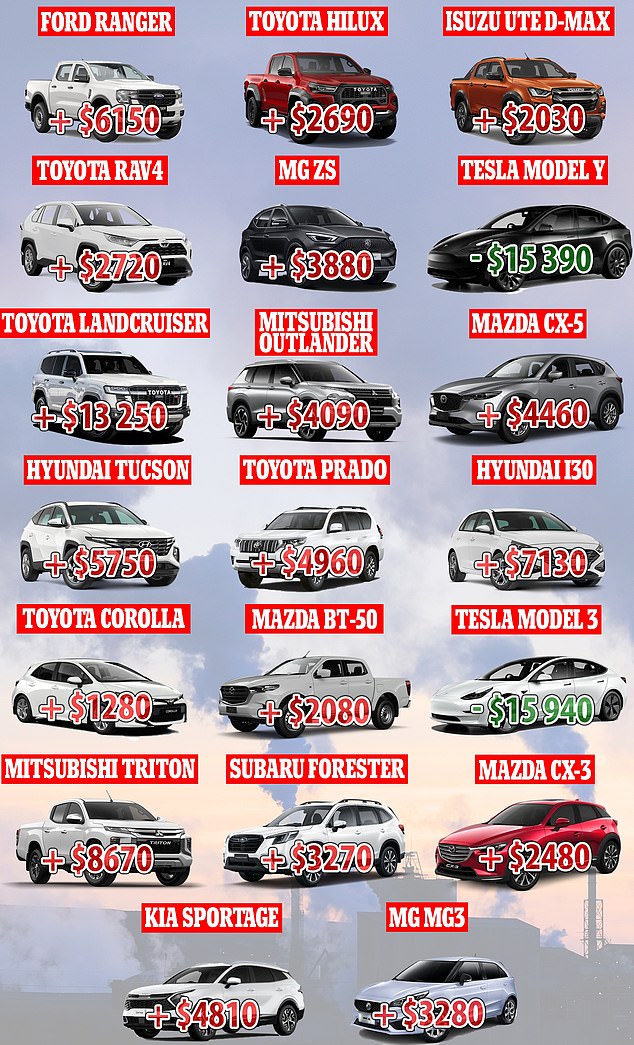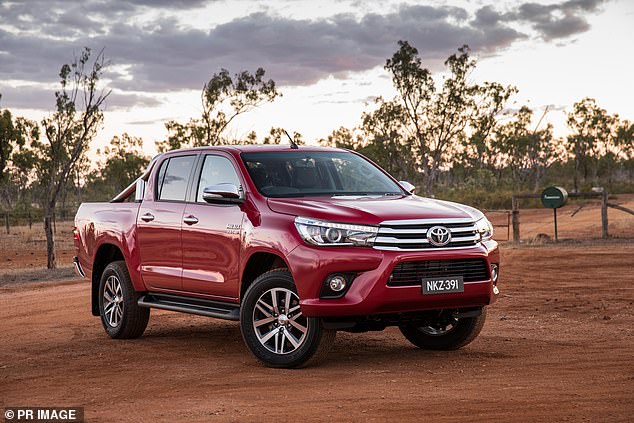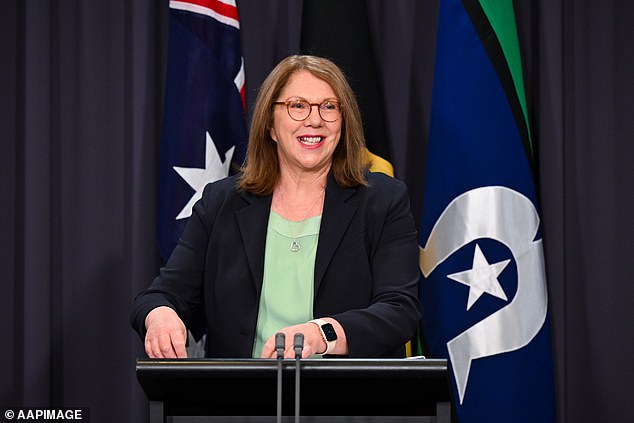Warning Aussies face paying up to an extra $13,000 for popular car models under Albanese government plan
Drivers may soon have to fork out thousands of extra dollars for their cars under new energy emissions standards proposed by the Albanian government.
Energy Minister Chris Bowen announced the new plan in early February, but has since come under fire from senior car industry executives.
This involves imposing carbon penalties on certain models in the context of the newly proposed 2025 CO2 targets.
Owners of Australia’s best-selling car in 2023, the Ford Ranger, may have to pay an extra $6,150 because of the tax, according to estimates from the Federal Chamber of Automotive Industries (FCAI).
Only estimates exist at this time because Mr Bowen has not yet released the government’s own modeling of how the changes will affect prices.
The FCAI estimates also suggest that the Toyota LandCruiser would be the car model most affected by the changes, with an additional $13,350 fine.
Energy Minister Chris Bowen (right) announced the new car emissions plan in early February

The carbon cap has come under fire from auto industry experts for its potential to increase costs
FCAI CEO Tony Weber told the Herald Sun that he does not understand why the government does not simply release its own figures.
“Good public policy happens when there is transparency about the objectives and the underlying assumptions about those objectives,” he said.
‘We obviously hope that there will be changes to the proposed standards. If it continues as formulated, the impact on consumers will be enormous, mainly in two ways: the higher purchase cost of the vehicle and the availability of the product in market segments.”
Carbon penalties would affect 18 of the 20 most popular cars of 2023, excluding only Tesla models that receive carbon credits.
The Toyota HiLux, Isuzu Ute D-Max, Toyota RAV4 and MG ZS would be priced at $2,690, $2,030, $2,720 and $3,880 respectively.
However, eco-friendly car options would have the opposite effect on prices, with Tesla Model Y owners receiving a $15,390 credit and those with a Model 3 getting $15,940.
FCAI’s figures assume that penalties would be awarded based on the variant with the highest CO2 emissions of any car.
Mr Webber said the plan was likely to push the market towards more electric vehicles in the future.
Under the proposed plan, no cars will be banned, but penalties will vary by model depending on their average emissions and whether or not they exceed the government limit.
This limit will decrease each year until the end of the decade, at which point requirements are expected to be 60 percent lower than when the reductions began.
Experts have speculated that these changes will limit the availability of traditional SUVs and ute models as manufacturers try to avoid fines for breaching pollution limits.

The Toyota HiLux (pictured), Isuzu Ute D-Max, Toyota RAV4 and MG ZS will face bills of $2,690, $2,030, $2,720 and $3,880 respectively under the new emissions standards
Mr Bowen was joined at a press conference by Infrastructure Minister Catherine King, both of whom stressed that the availability of models would not be affected by the change.
“It’s not a restriction on what Australians can buy,” Bowen said.
‘You can still buy a ute, an SUV, whatever you want… In countries with vehicle efficiency standards (like the US and New Zealand), utes and SUVs are often the best-selling cars. That’s up to the Australians, but we’d like to see Australians have more choices in that regard.”
The minister said if Australia met US standards by 2028, the cost of cars would fall by about $1,000 a year.
Ms King also stressed that the cost of cars will not increase.
“The good thing is there are years and years of actual practical experience in countries all over the world,” she said.
‘And so the international evidence is that it has no influence on the price. I have no doubt that we will hear all kinds of nonsense about this from the opposition and a range of other stakeholders. We’re going to hear that utes are banned.
‘That’s not true… We’ll hear about the price. Again, not true. No evidence whatsoever – there’s just no evidence whatsoever that it will affect the price, SUVs, utes or any other vehicle.”
Mr. Weber was skeptical about the optimism on display at the press conference, asking if the plan was a “win-win situation” and why they wouldn’t just release the numbers themselves.
a Ms King’s spokeswoman said the Government was working with manufacturers throughout the consultation phase on the new vehicle efficiency standard.

Infrastructure Minister Catherine King stressed that neither the price nor availability of combustion vehicles would be affected by the new plan, but experts still disagree
However, Senator Matt Canavan is not so optimistic and believes the new plan will increase the cost of many popular cars by $9,000.
‘Some simple calculations show what the impact of the Australian government’s plans will be,” he wrote for the Courier Mail.
‘The most popular car sold in Australia last year was the Ford Ranger. According to government figures, the car produces 182 grams of carbon dioxide per kilometer driven. In 2029, the government’s emissions limit for light commercial vehicles (the Ford Ranger car type) will be 81 grams of carbon dioxide. So the current Ford Ranger would be 101 grams over the limit and at a tax rate of $100 per gram, Ford will have to pay a tax of $10,000, which will be passed on to you.”
Mr Canavan’s estimates were supported by CarExpert.com.au founder Paul Maric, who told the Herald Sun there was currently a shortage of electric vehicles compared to running combustion engines.
Mr Maric said mass adoption of electric vehicles would cost Australians more money due to their complex technology, while at the same time giving drivers less power than traditional ones.
He also noted that manufacturers such as Ford and Toyota have limited EV options and would therefore be hit hard by the new penalties.
Australian Automotive Dealer Association (AADA) CEO James Voortman added that it was inevitable that these costs “could well lead to more expensive vehicles”.
